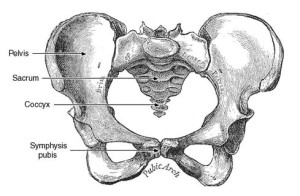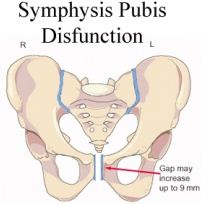What To Know Before You Get Pregnant
The more you know about your body and how it works, the better you will understand what to expect when you become pregnant. Planning before you get pregnant is very important. Simply put, the healthier you are as you are planning your pregnancy, the more likely you are to have a healthy baby. It is advisable to start planning for pregnancy as soon as you begin to have thoughts about having a baby.By: Katie Henderson

A baby’s organs begin to form in the first few weeks of pregnancy, before you may know that you are pregnant. As this is a critical phase of development, the more planning you do, the greater the pay off can be in terms of the health of your baby. Unfortunately, there are no foolproof methods for having a healthy baby, but there are many things you can do that may improve your chances of a good outcome.
Planning your pregnancy may help you to:
- conceive more easily.
- have a healthier pregnancy.
- avoid or minimize pregnancy complications.
- give birth to a healthier baby.
- recover more quickly and easily after giving birth.
- have a more pleasant postpartum (post birthing) experience.
- minimize your child’s risk of future adult health problems.
By planning your pregnancy, you will know that during this important early stage you were taking the best possible care of yourself and your baby.
Before becoming pregnant, you need to know the following:
- If you have any existing medical conditions that might affect your ability to conceive, have a healthy pregnancy, and/or give birth to a healthy baby.
- The health of your reproductive organs and breasts.
- Your fertility status.
- Your genetic history/heritage.
- Your metabolism rate.
- The condition of your heart, blood, lungs, urine, and hormones.
- If you need any adult immunizations/vaccinations.
- How current lifestyle choices could affect your pregnancy or your baby.
TTC Difficulties: Trouble Becoming Pregnant?
If a man & woman are having regular sexual intercourse, most women will conceive within 6 months. Almost all women will become pregnant in one year. If you do not become pregnant after a year, it may be time to consider consulting your doctor. Only after a year of trying to conceive would a medical doctor consider your situation as having trouble getting pregnant. All women are different however, so don’t panic – at least not yet.
Having trouble getting pregnant may be due to many factors. These include but are not limited to: timing, stress, age, premature withdrawal or pulling out by the partner, reduced vaginal lubrication, or more complicated medical factors, such as male and/or female infertility issues.
A pre-pregnancy checkup can help you identify which, if any, of these factors could be influencing your ability to conceive. This could save you and your partner a great deal of unnecessary stress. Knowing your body, particularly when you ovulate, helps you plan conception. Immediately before, during, or immediately after ovulation are the best times to conceive. Once you know you’re ovulating, you have a 24-48 hour window of opportunity to become pregnant. Remember, sperm can live 24-72 hours in the woman’s reproductive system, so conception can happen if you make love a day or two before or after ovulation.
How Will I Know When I’m Pregnant?
The most common is a missed or late period. Although, this is not a sure way to tell. About three weeks after conceiving, you will begin to notice these other signs:
- Tender, swollen breasts.
- Fatigue.
- Urge to urinate more often than usual.
- Nausea, sometimes made worse by certain smells and tastes.
- Becoming emotional, even teary.
- Increased vaginal discharge.
What is the soonest I can know for sure?
A blood test at a doctor’s office, 5-7 days after conception is the fastest fool-proof method of getting that definitive answer.
For those willing to wait a couple of extra days, a home pregnancy test can determine if you are pregnant in as little as 10 days after the date on which you suspect conception occurred.
Once you think you’re pregnant, it is very important to schedule an appointment with your health care provider as soon as possible.
How to successfully develop new, healthy lifestyle habits before becoming pregnant
It can take time to establish new healthy behavior patterns and break harmful habits, especially those bad habits that have been repeated for years! The best way is to be motivated by why you are doing it. Sometimes it is easier to make changes for someone you love than for yourself. Think about the baby you are planning for. Don’t indulge in any habits you wouldn’t want your child to have.
What to eat while eating for two
As part of the revised FDA national dietary guidelines for healthy eating, there are two specific recommendations for pre-pregnant women that relate to iron and folate (folic acid):
- Consume adequate synthetic folic acid daily (from fortified foods or supplements) AND food forms of folic acid from a varied diet.
- Whether you are planning to get pregnant or not, you must be sure to get enough folic acid.
Folic Acid, also known as folate, is a B vitamin that helps a baby’s neural tube — the part of the embryo that becomes the brain and spinal cord — develop properly. It is critical to start taking it before conception and to continue taking it through the third month of pregnancy, when the baby’s neural tube is developing, to prevent birth defects in the spine and skull.
You can get Folic Acid by taking a high-quality multivitamin daily. You will also find it in fortified breakfast cereals; citrus fruits and juices; dried peas and beans; and green, leafy vegetables.
Eat foods high in heme-iron, iron-rich plant foods, iron-fortified foods, or foods that facilitate iron absorption, such as vitamin C-rich foods.
Iron is important during pregnancy as it prevents anemia, a condition in which the body isn’t able to produce enough healthy red blood cells. Developing infants need a high level of red blood cells in order to receive enough oxygen. And, anemia in the mother can be passed on to her baby.
You can get heme-iron by eating food such as red meats, fish, and poultry (basically, food from animal sources). Iron-rich plant foods include cooked beans, lentils, and enriched pasta. Many breakfast cereals are also iron-fortified.
Foods that help iron absorption consist of fruits (oranges, orange juice, cantaloupe, strawberries, grapefruit) and vegetables (broccoli, brussels sprouts, tomato, tomato juice, potatoes, and green and red peppers). These are especially effective when eaten with iron-rich foods like meat, fish, and poultry.
Is my weight a consideration for getting pregnant?
A healthy body weight promotes general health and reduces the likelihood of developing heart disease, some cancers, and diabetes. Achieving and maintaining a healthy weight is making an investment in your health, your prenatal health, the health of your future baby, and the well-being of your growing family.
Weight can and will affect a woman’s fertility. Studies have shown that a woman’s ability to become pregnant may be severely compromised by two weight-related extremes:
- excessive thinness
- excessive obesity
Once you do get pregnant, your weight affects the baby. Underweight women often have smaller babies. Infants with low birthweight (5-1/2 pounds or less) are at a greater risk of death within the first month of life, as well as increased risk for developmental disabilities and illness throughout their life.
Overweight women may suffer from medical problems, such as high blood pressure and diabetes, that can seriously complicate a pregnancy. If you are overweight, you have a higher risk of having a baby with certain birth defects (like neural tube defects), experiencing more difficulty during labor and delivery, delivering via cesarean section, and hemorrhaging.
While you are planning your pregnancy is the best time to try to reduce your risks through good nutrition and exercise. We strongly recommend that you take the time now, before you become pregnant, to assess your diet and eating patterns and begin to make changes that will help you achieve a healthy weight before you conceive. Once you become pregnant, you should not try to lose weight as it could harm your baby.
Should I have a pre-pregnancy checkup before I try to become pregnant?
A pre-pregnancy checkup is a smart idea. Even if you think you are healthy and ready to get pregnant, a pre-pregnancy checkup is a good opportunity to start asking questions. Make a list of issues before your appointment and ask your caregiver for information. Your health care provider can help you minimize risks associated with pregnancy and any existing medical conditions that could affect pregnancy. The more you can inform your caregiver before you conceive, the better advice they can give you to help you have a healthy pregnancy.
If you are taking any prescription medications, over-the-counter medicines, or alternative or herbal remedies, your caregiver can advise you about how and why you may need to change your practices. Some drugs, and even seemingly harmless ones like some acne medicines or certain vitamins, can actually have the opposite affect on you once you become pregnant and/or could affect your baby.
How do my partner and I know if we’re emotionally ready to have a baby?
You’re emotionally ready to have a baby if you’re having it for the right reasons, with the right person, at the right time, and go into it with realistic expectations of yourself, each other, and your relationship.
 intense pressure and pain. Some women have described this as a feeling that “everything is about to fall out the bottom”.
intense pressure and pain. Some women have described this as a feeling that “everything is about to fall out the bottom”.
 As many as 1 in 3 pregnant women may have this condition to some degree, and may not even recognize it as a condition all its own. More often than not, it is overlooked, as women do their best to endure it as another major discomfort of pregnancy.
As many as 1 in 3 pregnant women may have this condition to some degree, and may not even recognize it as a condition all its own. More often than not, it is overlooked, as women do their best to endure it as another major discomfort of pregnancy. doctor. Never just endure the pain. Many things can be done to help lessen the symptoms of SPD. Acupuncture is an increasingly popular way to alleviate all kinds of pregnancy ills, including pelvic girdle pain. Your doctor will almost always instruct you to purchase (and wear) a pelvic support girdle, aka a maternity belt with a special pelvic support built into it.
doctor. Never just endure the pain. Many things can be done to help lessen the symptoms of SPD. Acupuncture is an increasingly popular way to alleviate all kinds of pregnancy ills, including pelvic girdle pain. Your doctor will almost always instruct you to purchase (and wear) a pelvic support girdle, aka a maternity belt with a special pelvic support built into it. This undergarment will provide much needed support for your belly (and relief for your pelvis). These same products are also used to treat a very common condition during pregnancy called vulvar varicosities, which is effectively vulvar or vaginal varicose veins. While more common among women who are pregnant, many women who are not pregnant and some who’ve never even been pregnant occasionally come down with this most unfortunate condition characterized by painful swelling of the vulvar region.
This undergarment will provide much needed support for your belly (and relief for your pelvis). These same products are also used to treat a very common condition during pregnancy called vulvar varicosities, which is effectively vulvar or vaginal varicose veins. While more common among women who are pregnant, many women who are not pregnant and some who’ve never even been pregnant occasionally come down with this most unfortunate condition characterized by painful swelling of the vulvar region.